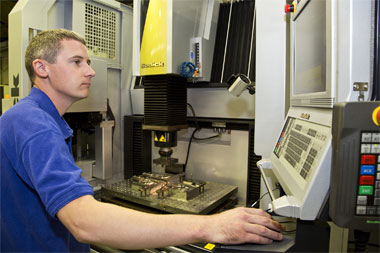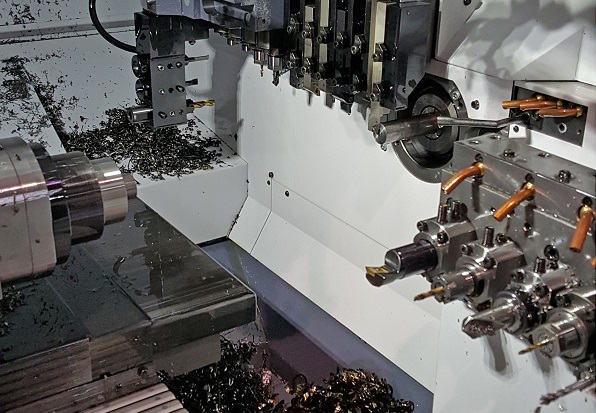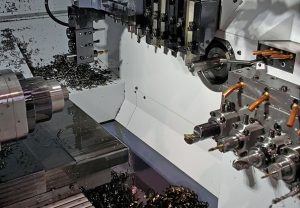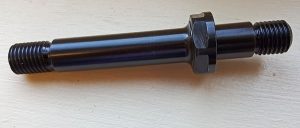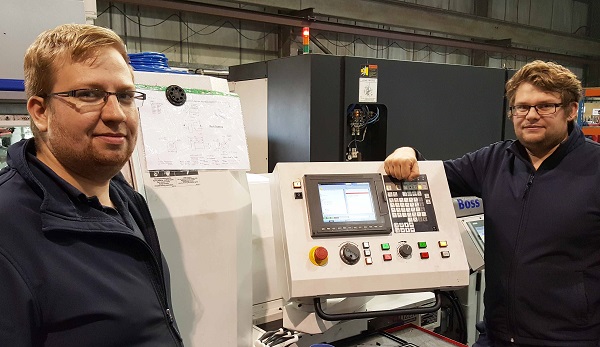Investment by ATS UK in a Sodick AG60L from Sodi-Tech EDM is on course for a short payback period of just 18 months. This is predominantly as a result of cycle times that have been cut by two-thirds in some instances, as well as reduced electrode requirements.
Advanced Tooling Systems UK Ltd was first incorporated in 2001, since when it has become a specialist in design, product development, prototyping and manufacturing for a number of demanding sectors. The company was formed by the amalgamation of two well-respected, Kent-based manufacturers: Millaber, based in Maidstone, and Folkestone Precision Engineering. Both companies, which remain at their respective facilities, served the automotive, white goods and medical industries for over 50 years before joining forces.
At Folkestone, ATS focuses on injection mould tools and precision engineering projects for a Europe-wide customer base. Core business of this ilk demands technologies such as EDM, and it is here that ATS UK recently sought to upgrade its die sink capabilities.
 “We were witnessing an increase in demand for spark erosion work involving thin, deep ribs,” explains technical director Mark Terry. “For instance, we were recently awarded a repeat contract for a number of multi-impression two-shot wheel moulds. Traditionally, each impression required 45 hours of spark erosion and three electrodes. The target cost and lead-time for the package would not have allowed us to complete the project on-time and on-budget, so we began investigating new EDM technologies.”
“We were witnessing an increase in demand for spark erosion work involving thin, deep ribs,” explains technical director Mark Terry. “For instance, we were recently awarded a repeat contract for a number of multi-impression two-shot wheel moulds. Traditionally, each impression required 45 hours of spark erosion and three electrodes. The target cost and lead-time for the package would not have allowed us to complete the project on-time and on-budget, so we began investigating new EDM technologies.”
Among three vendors invited to put forward a proposal was Sodi-Tech EDM, which recommended the Sodick AG60L CNC die-sink machine with optional 30-station tool changer.
“Sodi-Tech quoted some extremely impressive time savings on the wheel mould impressions and indicated that each impression could be completed in a third of the time using the Sodick AG60L,” says Terry. “In all honesty, we thought this was unlikely, so we offered up a core and an electrode and invited them to prove it. We went along to Sodi-Tech’s facility in Coventry to watch proceedings. Needless to say, they did it, and we placed the order for the machine on the way home. We knew that EDM technology had moved on, but not to that extent. It was an incredible eye-opener.”
Featuring linear motor drives and glass scale feedback on the X, Y and Z axes, the Sodick AG60L houses special circuits for electrode wear reduction, fine finishing and energy saving. Travels are 600 by 420 by 370 mm in X, Y and Z respectively.
Since the installation of the machine in March 2017, ATS UK confirms that EDM timings had been reduced by approximately 60%. Furthermore, less electrodes are required, thus delivering further savings.
“In reality, we experience almost zero electrode wear when using the AG60L, which is very impressive,” says Terry. “We found ourselves only swapping the electrode on this particular job simply because we’d made one, not because there was a real requirement.”
The graphite electrodes for the wheel tools were shaped like a wheel featuring a dozen spokes. Each spoke started at 1 mm at the root tapering with draft to 1.2 mm at the top and 62 mm in depth.
A further saving for ATS UK is the fact that two of its previous EDM machines have been replaced by the output of the Sodick AG60L. In fact, the Sodick machine has been paired with a 32-pallet automation device that allows the company to run lights-out overnight.
“The speed of the machine and its automation means we are on track for an 18-month ROI,” confirms Terry. “If we left our previous die-sink machine to run overnight it would finish at 4pm the next day – the Sodick finishes the same quantity of work by 4am. That’s a great result for ATS UK, which not only vindicates our investment decision but supports our business growth moving forwards. We are increasingly seeing mould tool work return from offshoring projects in China, particularly as the exchange rate means that tools from the Far East are now 20% more expensive than 12 months ago.”
This increase in work for UK mouldmakers means that ATS UK as a whole now employs 65 people and achieves turnover just shy of £8m, which is up an impressive 25% in the past five years alone.
“We have full CAD to production capability here, which is a major contributor to our growth, along with financial security that allows us to take on larger projects,” says Terry. “Clearly, investment in the latest manufacturing technologies, such as the Sodick AG60L, is another factor delivering genuine competitive advantage. For instance, some of our jobs demand tolerances as tight as 20 µm. The new machines provides us with the confidence to achieve this limit first time, whereas previously we would normally need two hits.”
Another significant benefit to the ISO9001-accredited company is the ease-of-use afforded by the Sodick control and its simple programming functionality.
“The biggest problem in our industry is finding fully-skilled toolmakers, who simply no longer exist,” says Terry. “As a result, we have been growing our own toolmakers by taking on two apprentices, every year, for the past eight years. Using our previous machine it would take up to six months to complete EDM training. However, with the Sodick machine we have already fully trained three employees in a fraction of that time.”
For further information www.sodi-techedm.co.uk






